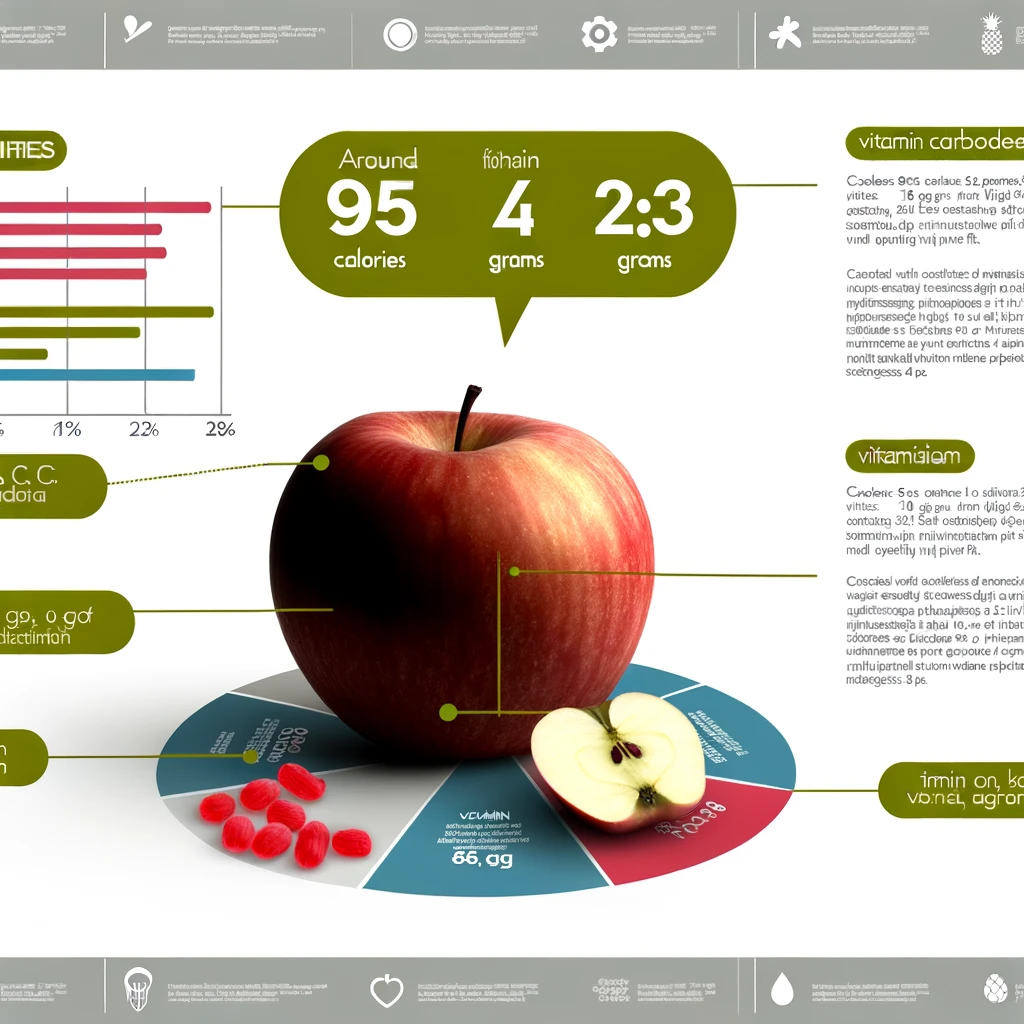Apples are a staple in diets around the world, revered not only for their taste but also for their nutritional benefits. When it comes to caloric content, the number of calories in an apple can vary depending on its size and variety. On average, a medium-sized apple (about 182 grams) contains approximately 95 calories. This article delves into everything you need to know about the caloric content of apples and why they are a healthy addition to your diet.
Caloric Breakdown
Delving deeper into the caloric breakdown of an apple provides insight into why this fruit is a nutritious choice for a balanced diet. Apples are primarily composed of water and carbohydrates, with a medium-sized apple (about 182 grams) containing around 25 grams of carbohydrates. These carbohydrates consist mainly of natural sugars such as fructose, glucose, and sucrose, alongside about 4 grams of dietary fiber. The fiber in apples, both soluble and insoluble, aids in digestive health and helps maintain a feeling of fullness, contributing to weight management.
Although apples are not a significant source of protein, with less than half a gram per medium apple, they still offer a small boost. Furthermore, apples contain virtually no fat, making them a low-calorie, nutrient-dense snack option. The vitamins and minerals present, including Vitamin C and potassium, support overall health by enhancing the immune system and contributing to cardiovascular health. By understanding the caloric breakdown of an apple, it becomes evident why incorporating this fruit into one’s diet can offer various health benefits, from aiding digestion to supporting heart health, all within a low-calorie package.
Varieties and Sizes

The world of apples is incredibly diverse, with over 7,500 varieties cultivated across the globe, each with its own unique flavor, texture, and color. This diversity allows apples to be incredibly versatile, suitable for fresh eating, cooking, baking, and even making cider. Varieties range from the tart Granny Smith, perfect for pies due to its firmness and sour profile, to the sweet and crunchy Honeycrisp, a favorite for snacking.
Size-wise, apples can vary significantly, affecting both their culinary use and nutritional content. Smaller apples, like the Lady Apple, can be as petite as a few ounces, ideal for single servings or decorative purposes. In contrast, larger varieties like the Bramley or Mutsu can weigh over a pound, making them excellent for recipes that require a lot of apple flesh.
Climate and cultivation practices also influence the size and flavor profile of apples, with some varieties thriving in cold climates, producing crisp and dense fruits, while others prefer warmer regions, resulting in juicier and sweeter apples. This fascinating range of varieties and sizes underscores the apple’s universal appeal, offering something special for every palate and purpose.
Health Benefits
Apples are more than just their calorie count. They are rich in important nutrients and antioxidants. The dietary fiber in apples, particularly soluble fiber, can help regulate blood sugar levels and cholesterol. Apples are also a source of Vitamin C, which supports the immune system, and potassium, which is vital for heart health. The various phytochemicals and antioxidants in apples, such as quercetin, can protect against chronic diseases, including heart disease and diabetes.
Adding Apples to Your Diet

Incorporating apples into your diet is easy and beneficial. They can be eaten raw as a crunchy snack, added to salads for a sweet contrast, or cooked into dishes like apple sauce and pies. Remember, while apples are healthy, moderation is key, especially in dishes with added sugars.


